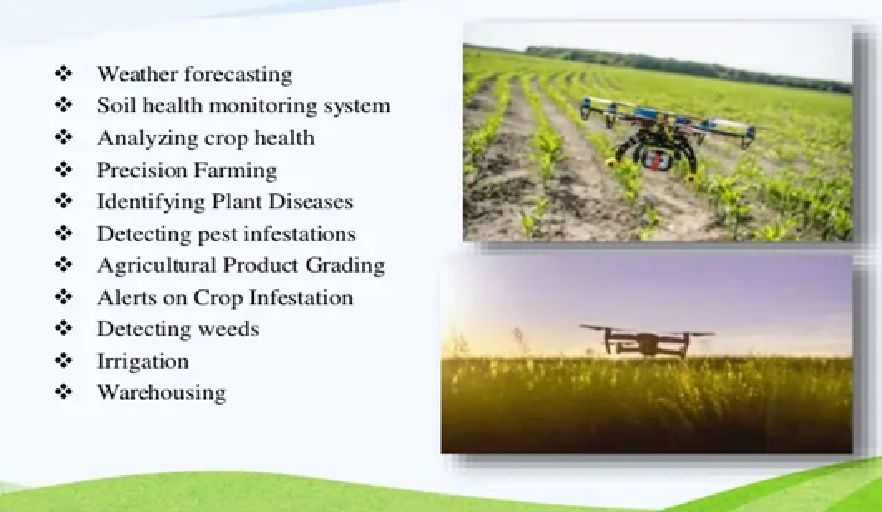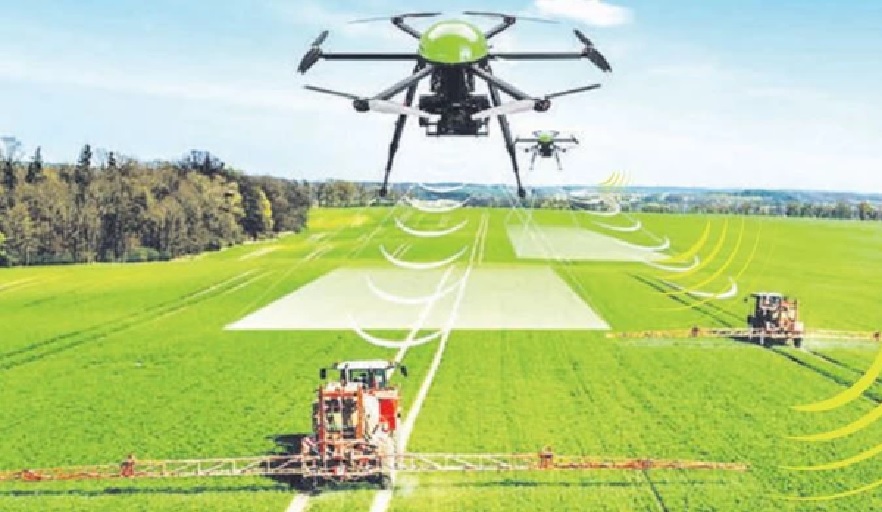AI is Such a Challenge for Farmers
Farmers tend to perceive AI as something that applies only to the digital world. They might not see how it can help them work the physical land. This is not because they’re conservative or wary of the unknown. [1] Their resistance is caused by a lack of understanding of the practical application of AI tools. The implementation of AI in agriculture is shown in figure 1.

Figure 1: The Implementation of AI in Agriculture
New technologies often seem confusing and unreasonably expensive because AgriTech providers fail to clearly explain why their solutions are useful and how exactly they should be implemented. This is what happens with artificial intelligence in agriculture. Although AI can be useful, there’s still a lot of work to be done by technology providers to help farmers implement it the right way.
Implementation of Artificial Intelligence in Indian Agriculture
Many industries around the world have undergone significant changes as a result of technological advancements. Surprisingly, agriculture, while being the least computerised, has seen a surge in agricultural technology development and commercialization in India. [2] In the realm of agriculture, artificial intelligence (AI) is a new technology. Agriculture has been elevated to a new level thanks to AI-based equipment and tools. Crop production has improved as a result of this technology, as has real-time monitoring, harvesting, processing, and marketing. The latest automated system technologies, such as agricultural robots and drones, have made a huge contribution.
AI enables better decision-making
Predictive analytics can be a real game-changer. Farmers can collect and process significantly more data and do it faster with AI than they would otherwise. Analyzing market demand, forecasting prices, and determining the optimal time for sowing and harvesting are key challenges farmers can solve with AI.
That said, AI can also gather soil health insights, provide fertilizer recommendations, monitor the weather, and track the readiness of produce. All of that enables farmers to make better decisions at every stage of the crop cultivation process.
Diagnosing Soil Defects
Farming is about risk calculation – But what if the risk can be calculated and cured beforehand. [3] Anomaly analysis can help you with identifying the weakness and strength of the soil, resulting in more revenue generation and saving ample amount of time.
Production Forecasting using weather condition:
“Climate is now a data problem,” says Claire Monteleoni. Earlier, Improper weather predictions lead to many crops lost- resulting in loss of money and time invested. But technology has evolved over years leading businesses to higher stable growth. Regression analysis will help you with better production forecasting using weather conditions.
Besides, all challenges in adopting AI in agriculture are solvable [4]:
- Confusion. Happens when an AI software provider fails to clearly explain implementation and maintenance
- Lack of experience. Continuous education and training are required to help farmers implement AI software and hardware properly
- Outdated digital infrastructure. In many cases, even the latest AI solutions can be incorporated into existing infrastructure (farm management software, tractors, spreaders, etc.)
References:
- https://intellias.com/artificial-intelligence-in-agriculture/
- https://techwireasia.com/2021/09/ai-applications-will-shape-the-future-of-indias-agriculture-industry/
- https://www.mindbowser.com/solve-agricultural-problems-using-machine-learning/
- https://idapgroup.com/blog/artificial-intelligence-in-agriculture/
Cite this article:
Vinotha D (2021) The Artificial Intelligence (AI) in Agriculture, AnaTechmaz, pp 3





